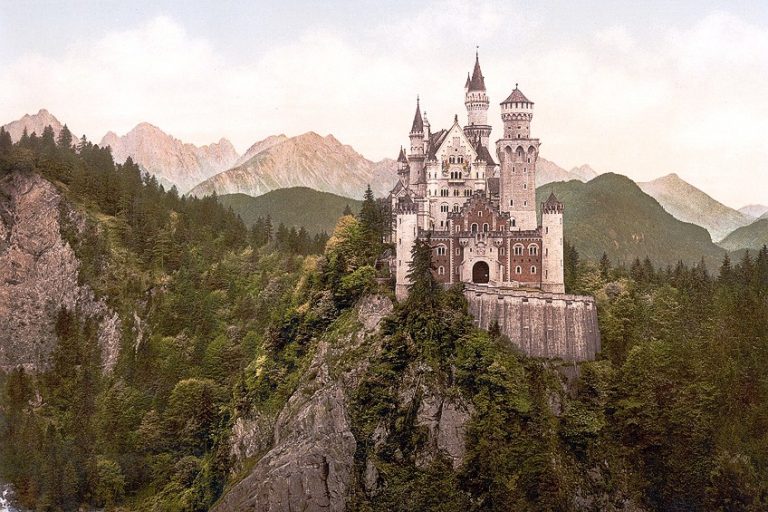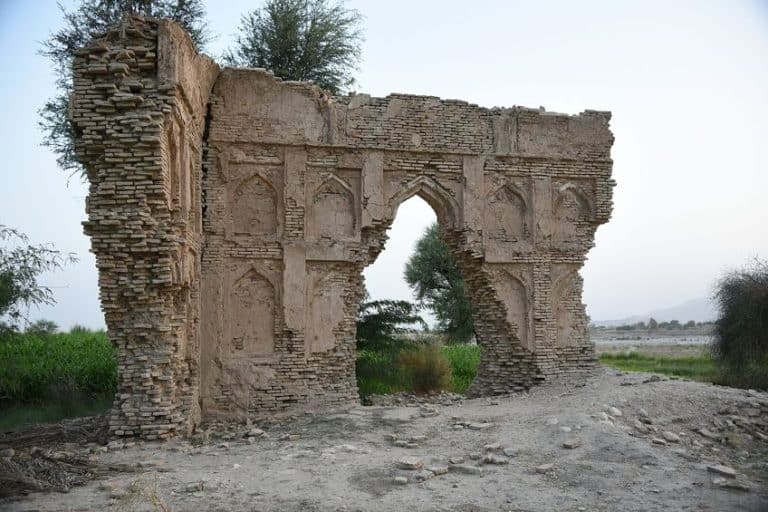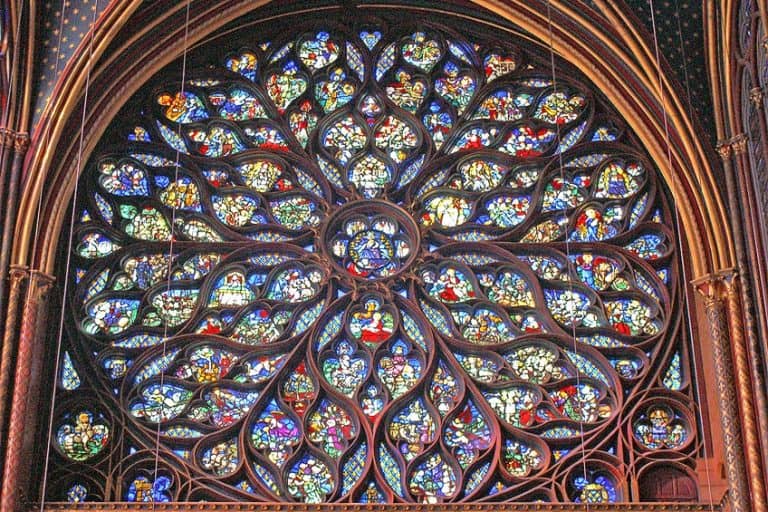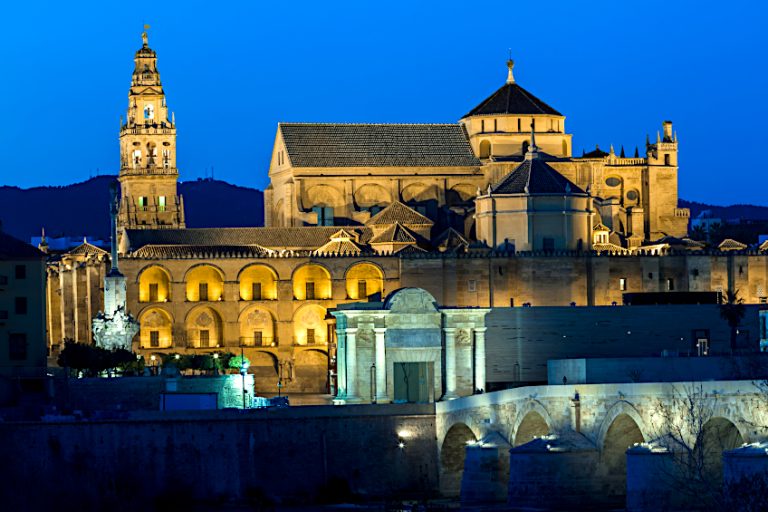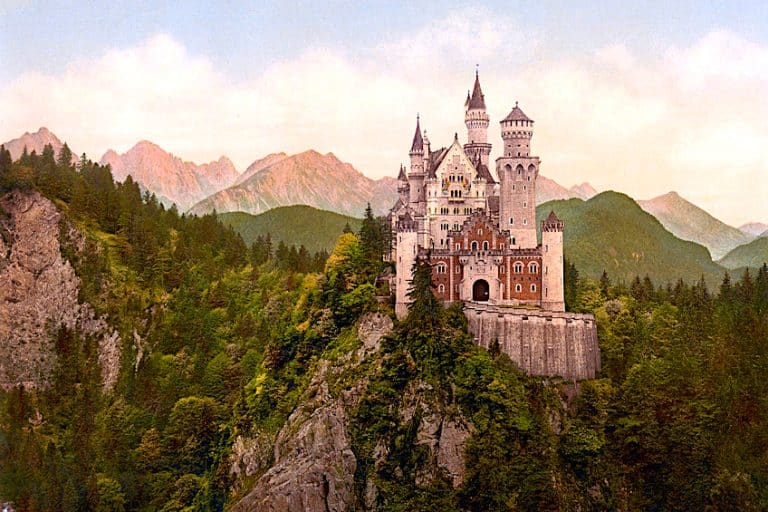Blue Mosque in Istanbul – Turkey’s Elegant Architecture
Why was the Blue Mosque built and where is the Blue Mosque located? Also known as the Sultan Ahmed Mosque, it was built to serve as an imperial place of worship and is located next to the famous Sultanahmet Square in Istanbul, Turkey. Due to the Blue Mosque’s architecture and history, it not only serves as a place of worship, but also a world-famous tourist destination. Let’s find out more about the Blue Mosque in Istanbul, such as the Blue Mosque’s interior and exterior features, and answer frequently asked questions on the subject, such as “when was the Blue Mosque built?”.
Table of Contents
Exploring the History and Architecture of the Blue Mosque in Istanbul
| Architect | Sedefkar Mehmed Agha (1540 – 1617) |
| Date Constructed | 1616 |
| Height (m) | 43 |
| Function | Mosque |
| Location | Sultanahmet Square, Istanbul, Turkey |

The Blue Mosque in Istanbul was constructed during the reign of Ahmed I, in the time period between 1609 and 1616. Its collection of structures includes Ahmed’s tomb, a hospice, and a madrasah. Beautifully painted blue tiles cover the Blue Mosque’s interior walls, and spotlights illuminate the five major domes of the mosque, six minarets, and eight minor domes.
It is located near the Hagia Sophia, Istanbul’s main mosque prior to the construction of the Blue Mosque, and is another major tourist attraction in the area.
History of the Blue Mosque in Istanbul
Istanbul was founded by the ancient Greeks in 667 BCE who called it Byzantium. This city would later become the Roman Empire’s imperial seat and was renamed Constantinople. It served as the capital of the Roman-operated Greek-speaking Byzantine Empire for nearly 1,000 years. Constantinople was then subsequently taken by the Ottoman Turks and served as the capital of the Ottoman Empire from 1453 up until 1922. It took 7 years after the Republic of Turkey was established in 1923 for the capital to be called Istanbul.

Construction
During the Ottoman Empire’s ascent, in the 15th and 16th centuries, a mosque was constructed on each of the seven hills that make up Old Istanbul. However, as the Hagia Sophia was situated on the city’s first hill, no sultan had ever considered building another mosque in that location until the 17th century. One of the main causes for this was that there were already too many structures in the Sultanahmet area which serves as Istanbul’s center.
Ahmed I, who rose to the kingdom in the 1600s, wished to erect a famous mosque in honor of himself.
However, all of the city’s hills already had mosques built by their predecessors. As a result, he chose to construct a mosque opposite the Hagia Sophia. Expropriation activities have begun in the territory adjacent to the Hippodrome. The state purchased and demolished several dwellings and businesses. As a result, the needed space to accommodate the construction of the Blue Mosque became available. There was a “Great Palace” where the emperors lived throughout the Roman and Byzantine eras where the mosque now stands. The palace’s vast courtyards reached all the way to the shoreline.

The last Byzantine emperors deserted this palace, which was on the verge of collapse in the subsequent Byzantine era. The site was occupied with additional structures throughout time after the Ottomans erected the Topkapi Palace for themselves. Ahmed I, though, demolished the majority of these buildings and began work on the Blue Mosque in 1609. Sultan Ahmed I wished to restore everyone’s spirits after losing all of his wars with Persia and reassert the power of the Ottomans by constructing an imperial Mosque.
The Blue Mosque in Istanbul would be the first very imperial mosque to be built in over four decades.
Unlike his predecessors, who funded their mosques with war spoils, Ahmed I obtained funding from the Treasury because he had not won any significant conquests. The payment was made from the public purse rather than the sultan’s war pillaging, which enraged the Muslim jurists, known as the ulama. The mosque was designed by Sedefkar Mehmed Agha, an Ottoman architect and student of the great Mimar Sinan, and it was built over a seven-year period, from 1609 until 1616.

The mosque’s construction was a major project involving thousands of laborers and artisans. It was constructed on the site of the historic Hippodrome, a Byzantine-era hub of politics and culture. The sultan, who passed at a young age, just had a year to spend in his mosque.
Yet, the mosque he left behind is now one of Istanbul’s most visited historical structures.
Recent Renovations
The Blue Mosque reopened on the 21st of April for the Ramazan Bayram prayer after six years of undergoing the most extensive repair in its 400-year-long history. The reopening of one of the most famous mosques in the world was critical for the devout, particularly for the Ramazan Bayram prayer. It is an active site of worship and among the most important mosques in the Muslim world. The scaffolding on the mosque’s minarets was fully removed as the reopening date approached. While restoration work continued in the mosque’s outer and inner courtyards, tarps and scaffolding could still be seen on the southern side for a few days before the opening.

The Blue Mosque’s Architecture
The Blue Mosque is a notable example of classical Ottoman architecture, which is distinguished by the inclusion of domes, semi-domes, and minarets, as well as complex calligraphy and tile work. Constructed under the Ottoman Empire, this architectural approach impacted mosque construction throughout the Muslim world. The Sultan Ahmed Mosque is an outstanding architectural achievement designed following the guidelines of the renowned architect Mimar Sinan.
Before his death in 1588, Mimar Sinan had contributed all studies on classical Ottoman architecture and instructed architects who would carry on his heritage of architecture.
Because of its extensive use of blue, the Sultan Ahmed mosque also goes by the name of the “Blue Mosque” all around the world. To this day, the ornamentation on the domes inside the mosque remains the finest specimens of Ottoman culture. Thousands of blue and white Iznik tiles cover the mosque’s interior.
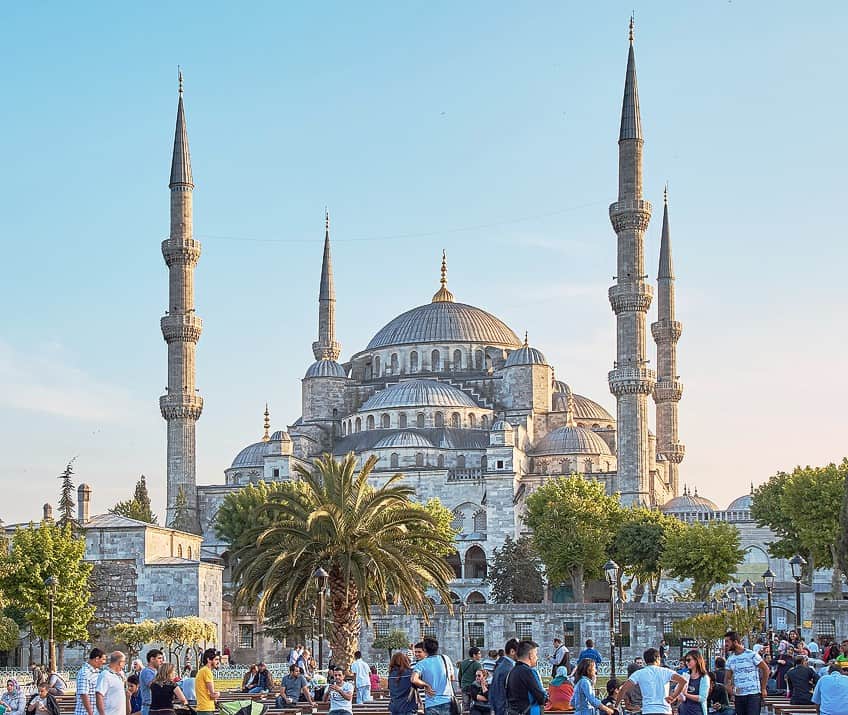
The building’s blue-stained glass windows contribute even more to the mosque’s blue aesthetic. These windows and blue tiles were chosen for their gorgeous aesthetics as well as their religious significance. Blue is regarded as a holy color in Islamic tradition, representing the sky and heavens, and it was thought that using blue in the architecture of the mosque would assist in creating a spiritual and tranquil ambiance for worshipers.
Blue Mosque Exterior
Apart from the inclusion of turrets on the domes located in the corners, the mosque’s façade of the vast courtyard was created in the same style as that of the Süleymaniye Mosque. The courtyard is almost equivalent to the size of the mosque itself and is surrounded by an uninterrupted arched arcade. On both sides of the mosque’s large courtyard, there are various restrooms. When compared to the expanse of the courtyard, the central fountain is rather small. Architecturally, the grand yet narrow doorway to the courtyard sticks out from the arcade.
A little ribbed dome with a semi-dome on top sits above an elevated tholobate with an impressive stalactite formation.
Its ancient primary school serves as the Mosque’s Information Centre, which is located opposite the mosque’s outer wall on the Hagia Sophia side. This is where tourists can receive a free introduction to the Blue Mosque and the Islamic religion in general. A hefty iron chain hangs in the upper section of the western court entrance.

The Sultan alone was permitted to go inside the mosque’s court while on horseback. It was placed in such a way that the Sultan had to stoop his head every time he approached the court to prevent himself from being hit by the chain. This was meant to be a symbolic gesture intended to guarantee the ruler’s humility in the presence of the Holy.
Minarets
The Sultan Ahmed Mosque is one among only five of the country’s mosques featuring six minarets. According to legend, an architect misinterpreted the Sultan’s desire for gold minarets as a request for six minarets, which was specific to the mosque of the Ka’aba in Mecca at the time. He reprimanded the architect for his oversight and then gave the order to build the Mecca mosque’s seventh minaret. The mosque is flanked by four minarets.
Every one of these flute minarets features three balconies with stalactite corbels, although the other two minarets at the forecourt’s end have only two balconies each.
The prayer caller, or muezzin, used to have to climb a small spiral staircase multiple times every day to deliver the call to prayer. Nowadays, they use a public announcement system instead, and the call to prayer can be heard throughout old Istanbul, which is then echoed by other neighboring mosques. Huge numbers of both Turkish locals and tourists congregate in the park in front of the mosque to hear the call to evening prayers as the sun sets and the mosque is exquisitely illuminated by colored flood lights.
Blue Mosque Interior
The inside is decorated with over 20,000 handcrafted tiles that were originally produced in Iznik city in over 50 distinct designs of tulips on the lower floors and at each pier. Lower-level tiles feature a more traditional style, while gallery-level tiles have lavish designs featuring cypresses, fruit, and flowers. Over 20,000 tiles were created under the direction of Kasap Haci, a master potter, and Baris Efendi. The sultan’s decree set the price of every tile, and tile prices, in general, went up over time. As a result of this, the quality of the tiles utilized for the structure steadily deteriorated.
Their colors have faded and shifted, and the glazes have become dull.
The back balcony wall’s tiles are restored tiles from the Topkapi Palace’s harem, which was destroyed by fire in 1574. The color blue dominates the upper levels of the Blue Mosque’s interior. Natural light enters through more than 200 elaborately crafted stained-glass windows. Ostrich eggs can be seen on the chandeliers, which were designed to deter spiders and hence minimize cobwebs from appearing in the mosque. The decorations include Qur’anic passages, many of which were created by Seyyid Kasim Gubari, widely regarded as the best calligrapher of his era.

Carpets provided by faithful individuals cover the flooring and are replaced often as they grow worn out over time. The numerous large windows give the sensation of spaciousness. Each Mosque exedra contains five windows. Every semi-dome contains 14 windows, while the center dome comprises 28. The Signoria of Venice gave the sultan the colorful glass for the windows as a gift. Most of these windows have been replaced with newer ones that have little to no artistic value.
Mihrab and Minber
The most significant feature of the interior of the Blue Mosque is the mihrab, which is made of superbly sculpted and carved marble and features a stalactite niche in addition to a double inscriptive panel above it. The elaborately adorned pulpit, or minber, positioned to the right side of the mihrab is where the Imam stands when giving his speech at prayer every Friday and on certain holy days.
The Blue Mosque in Istanbul has been specifically designed so that everybody in the mosque is able to hear and see the Imam even when it is extremely packed.
The Royal Kiosk, Lamps, and Tablets
A loggia, a platform, and two modest retiring chambers comprise the royal kiosk, which is situated in the southeastern corner. It serves as an entrance to the royal loge in the Blue Mosque’s southeast upper gallery. These apartments were converted into the Grand Vizier’s office following the defeat of the rebel Janissary Corps in 1826. There are 10 marble columns that support the royal loge. The seemingly countless lamps within the Blue Mosque in Istanbul used to once be encrusted with diamonds and gold.
Crystal balls and ostrich eggs can be seen in each of the glass bowls. Unfortunately, all of the ornaments were taken or pillaged for Istanbul museums. The huge tablets on the mosque walls are written with the titles of the Quran verses and Caliphs, initially by the great 17th-century calligraphy Ametli Kasm Gubarm, but they have been repainted repeatedly and restored over time.

Visiting the Sultan Ahmed Mosque
Now that you have read about this incredible historic structure’s history and heard about the Blue Mosque’s architecture, you are most likely keen on seeing it for yourself in person. We do not blame you, as the Blue Mosque’s interior is a really breathtaking sight to behold.
It does not matter which religious beliefs you follow, you cannot help but feel an overwhelming sense of peace and tranquility when you enter this sacred space.
While it is open to tourists, it also still actively functions as a mosque, with the devoted coming in to perform their daily prayers. Therefore, one should not treat this like a Disney park tour, but instead, be quiet and respectful of the space. Let’s look at the required dress code and etiquette one should consider before going, as well as the tours available at the Sultan Ahmed Mosque.
Location and Opening Hours
Where is the Blue Mosque located? The Sultan Ahmed Mosque is situated on the European side of Istanbul on Sultanahmet Square, Turkey’s historic center. It is bordered by a number of significant Turkish landmarks, such as Topkapi Palace, Hagia Sophia, and the famous Grand Bazaar. Because of its convenient location, the Blue Mosque in Istanbul is a popular destination for travelers to the ancient city, who are able to stroll around the surrounding neighborhood easily and safely and learn about Istanbul’s rich culture and history.
As of 2023, the Sultan Ahmed Mosque opens every morning at 09:00 and closes every evening at 17:00.
As with all mosques in the city, the Blue Mosque in Istanbul closes during daily prayer times. Some online sources suggest that the best time to visit the Blue Mosque is in the morning between 09:00 and 11:30, as the mosque is always open during these hours all year round. Yet, after that time there are noon prayers at certain periods annually. If you want to check the specific prayer times expected on the day of your visit, be sure to check out the official religious affairs page online.

However, keep in mind that mosques close an hour before prayer to clean and prepare the space for devotees. If you do arrive at a time of prayer, there is much to do and see in the nearby vicinity, including exploring the beautiful gardens next to the Hagia Sophia, visiting the underground Basilica Cistern, enjoying a cup of apple tea or Turkish coffee at one of the many quaint coffee shops, or shopping for souvenirs at the world-renowned spice markets. All of these places can be accessed by walking around Sultanahmet Square.
During the Byzantine period, it was known as the Hippodrome and was where the famous chariot races took place.
Dress Code and Fee
It doesn’t matter whether you are coming to pray or just to sight-see as a tourist, there is no entry fee for the Blue Mosque in Istanbul. As a sign of respect, it is essential to consider your dress code when visiting the mosque. Both women and men are required to dress modestly, covering any exposed parts of the arms, legs, and shoulders. Women will be required to wear a shawl over their heads, and if a man’s shoulders are bare, he too will need to cover them with a shawl.
Don’t stress if you didn’t bring one with you, as they have scarves and shawls at the kiosk that you can use for free.
If they determine that you are not dressed appropriately, they will provide you with a gown to cover up exposed areas of your body. You will also be required to remove your shoes before entering the mosque, which is a sign of humility in Islamic culture. You can store your belongings in the provided storage units and pick them up again on your way back out. You won’t enter the mosque barefoot, though, as they provide you with little slip-on plastic bag socks, which you discard afterward.
Touring the Blue Mosque in Istanbul
Once you have enjoyed the exterior architecture of Sultan Ahmed Mosque, and you have ensured that you have arrived at a time when there are no prayers, you can enter the complex and enjoy the courtyard and Blue Mosque’s interior. There are many tours available that take tourists on half-day or full-day guided expeditions of various sights in Istanbul, including the Blue Mosque.
They typically range from four to eight hours and can be pricey, but if you would like to learn about the places you encounter, then it’s a worthwhile experience. However, you can also just tour the place on your own, and there are even free audio tours that you can download and listen to while you walk around. Let us begin with what one can expect when entering the mosque’s courtyard. Remember to maintain a sense of respect as soon as you enter the complex.

The Blue Mosque Courtyard and Fountain
The Blue Mosque’s courtyard is a huge open space encircled by columns and arches. Guests can enter the courtyard, which is a significant feature of the mosque’s architecture. There is a big fountain in the courtyard that can be utilized for ablution, which is the Islamic rite of bathing before worship.
The white marble fountain is intricately embellished with tile work and calligraphy.
It is regarded as one of the mosque’s most stunning features, and it is a popular place for visitors to take photos. The mosque’s courtyard is also encircled by many small domed structures that were previously used as ablution facilities. These structures, which are similarly embellished with elaborate calligraphy and tile work, offer a glimpse into the architectural history of the mosque.
Touring the Blue Mosque’s Interior
The inside of the Blue Mosque is regarded as a must-see for any tourist in Istanbul. The inside of the mosque is expansive and airy, featuring high ceilings and big stained-glass windows that let in natural sunlight. The main prayer hall of the mosque is situated in the middle of the structure and is accessible by multiple massive doorways. The prayer hall is a huge space that can hold up to 10,000 attendees at once.
An enormous central dome, supported by four gigantic columns, dominates the room. The dome is adorned with elaborate floral motifs and calligraphy, exuding a sense of grandeur. Keep in mind, while visitors are welcome to look around the mosque’s interior, they must always remain respectful of the mosque and avoid disrupting worshippers in prayer.

Significance of the Blue Mosque in Istanbul
So far, we have covered the history and architecture of this famous mosque. We have also discussed what to expect and do if you visit the mosque. However, we have not yet touched on why the mosque is so significant to the Turkish people and the world in general. Let’s take a look at the historical, religious, cultural, and symbolic significance of the Sultan Ahmed Mosque.
Religious Significance
The Blue Mosque is a place of worship where people come to perform daily ritual prayers. The mosque’s vast prayer hall can hold thousands of attendees at once, making it among Turkey’s largest mosques. Its central location makes it an easy yet vital stop for pilgrims visiting Istanbul. The design of the mosque is also religiously significant.
The elaborate calligraphy and tiles of the mosque are designed to represent God’s beauty and glory, while the mosque’s huge central dome represents the skies and the presence of the divine.
In an era fraught with religious intolerance, it is essential that people from all cultures and walks of life get to experience the beauty and peace of the Islamic faith in real life, instead of from biased news coverage and people with religious prejudices.
Cultural Significance
It is a significant representation of Islamic architecture and art, as well as one of the world’s most stunning examples of Ottoman construction. The Blue Mosque has a long cultural history and serves as a reminder of Turkey’s Ottoman heritage. The mosque was constructed in an era of immense wealth and cultural achievements for the Ottoman Empire, and it is still an important cultural monument in Istanbul.
The mosque is accessible to people of all religions and this has helped establish it as such a popular place to visit. Istanbul itself is an ancient city that has encountered many different peoples throughout time, becoming tolerant of diverse cultures. Its mosques too, embody that spirit of cultural tolerance, encouraging those who are not Muslim to experience the beauty of Istanbul’s culture and religious practices.

Historical Significance
The Blue Mosque is thought to have been commissioned by Sultan Ahmed I in part to improve morale among his subjects after the defeat of the Ottoman Empire in the war against Persia. The Empire had sustained enormous losses throughout the war, and the sultan thought that building a great mosque could serve as an example of the empire’s perseverance and strength.
It was one of several significant construction projects started by the Sultan during his time in power to rebuild the empire and reestablish its image as a great and affluent nation.
The location of the mosque is equally significant. It was constructed on the site of an ancient Byzantine palace that had been demolished during Constantinople’s Ottoman takeover. This site was chosen to represent Islam’s triumph over the religion of Christianity.
Symbolic Significance
The dome is meant to symbolize the heavens, and the four arches symbolize the four corners of the globe, emphasizing the mosque’s significance as a global Islamic center. The decoration of the mosque is likewise significantly symbolic. The Blue mosque’s interior is covered in beautiful tilework believed to symbolize the skies, while white tiles represent the earth.

The tiles symbolize the connection of heaven and earth, as well as the mosque’s position as a link between both the physical and the spiritual realms. The mihrab, which points in the direction of Mecca, is adorned with magnificent calligraphy that includes Quranic verses. The calligraphy is very significant, emphasizing the Quran’s role in the Sultan Ahmed Mosque’s cultural and religious identity.
That completes our look at the breathtaking Blue Mosque in Istanbul. Built by Sultan Ahmed I to solidify his power and uplift the morale of his people following the empire’s loss during their war with Persia, the Blue Mosque’s architecture is an outstanding example of Ottoman architecture and its interior is famed for its expansiveness and stunning tile work. It has served as an important place of worship for the Muslim world for many centuries and continues to do so, while also encouraging non-worshippers of the religion to experience this sacred space for themselves.
Frequently Asked Questions
When Was the Blue Mosque Built?
Construction of the Sultan Ahmed Mosque started in 1609. It took them seven years to complete, and construction wrapped up in 1616. It was built by Sultan Ahmed I, who only managed to enjoy his beautiful creation for a single year before he passed away. It was built during the reign of the Ottoman Empire, on the site of what had once been the Hippodrome, which was a place where the people of the time would watch chariot races. Today, this area is the world-renowned Sultanahmet Square.
Why Was the Blue Mosque Built?
It was built at a time when the Ottomans had just lost a war with the Persians and was meant to reestablish the sultan’s position as a powerful leader, as well as improve the flailing morale of the population following their defeat. It was built on the site of an old Byzantine-era palace. Building it, there was a conscious decision as it signified the end of Christian rule in the region, and would serve to promote the strength of the Ottomans. The Sultan would most likely have preferred to build it on one of the hills, but they were all already occupied, so the decision was made to build it opposite the Hagia Sophia.
Justin van Huyssteen is a freelance writer, novelist, and academic originally from Cape Town, South Africa. At present, he has a bachelor’s degree in English and literary theory and an honor’s degree in literary theory. He is currently working towards his master’s degree in literary theory with a focus on animal studies, critical theory, and semiotics within literature. As a novelist and freelancer, he often writes under the pen name L.C. Lupus.
Justin’s preferred literary movements include modern and postmodern literature with literary fiction and genre fiction like sci-fi, post-apocalyptic, and horror being of particular interest. His academia extends to his interest in prose and narratology. He enjoys analyzing a variety of mediums through a literary lens, such as graphic novels, film, and video games.
Justin is working for artincontext.org as an author and content writer since 2022. He is responsible for all blog posts about architecture, literature and poetry.
Learn more about Justin van Huyssteen and the Art in Context Team.
Cite this Article
Justin, van Huyssteen, “Blue Mosque in Istanbul – Turkey’s Elegant Architecture.” Art in Context. August 23, 2023. URL: https://artincontext.org/blue-mosque-in-istanbul/
van Huyssteen, J. (2023, 23 August). Blue Mosque in Istanbul – Turkey’s Elegant Architecture. Art in Context. https://artincontext.org/blue-mosque-in-istanbul/
van Huyssteen, Justin. “Blue Mosque in Istanbul – Turkey’s Elegant Architecture.” Art in Context, August 23, 2023. https://artincontext.org/blue-mosque-in-istanbul/.




